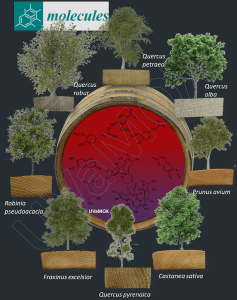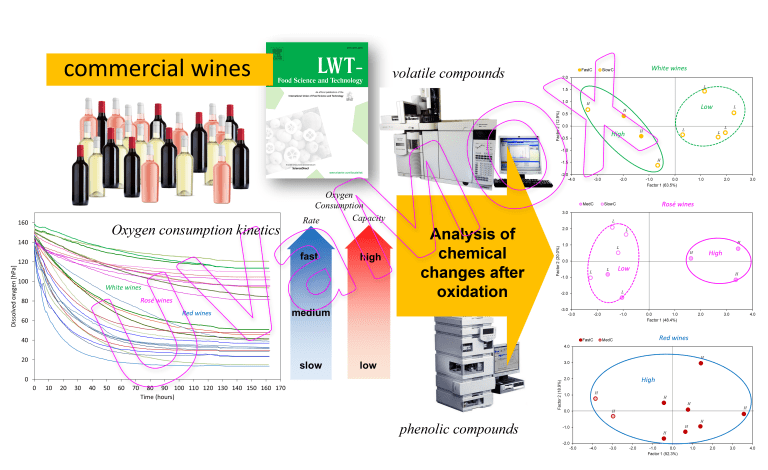Characterization of Tannin and Low Molecular Weight Phenol Compounds with Respect to Traditional Oak Woods. A Review
by Ana Martínez-Gil, Maria del Alamo-Sanza*, Rosario Sánchez-Gómez and Ignacio Nevares*
https://doi.org/10.3390/molecules25061474
Abstract
Wood is one of the most highly valued materials in enology since the chemical composition and sensorial properties of wine change significantly when in contact with it. The need for wood in cooperage and the concern of enologists in their search for new materials to endow their wines with a special personality has generated interest in the use of other Quercus genus materials different from the traditional ones (Q. petraea, Q. robur and Q. alba) and even other wood genera. Thereby, species from same genera such as Q. pyrenaica Willd., Q. faginea Lam., Q. humboldtti Bonpl., Q. oocarpa Liebm., Q. stellata Wangenh, Q. frainetto Ten., Q. lyrata Walt., Q. bicolor Willd. and other genera such as Castanea sativa Mill. (chestnut), Robinia pseudoacacia L. (false acacia), Prunus avium L. and P. cereaus L. (cherry), Fraxinus excelsior L. (European ash) and F. americana L. (American ash) have been studied with the aim of discovering whether they could be a new reservoir of wood for cooperage. This review aims to summarize the characterization of tannin and low molecular weight phenol compositions of these alternative woods for enology in their different cooperage stages and compare them to traditional oak woods, as both are essential to proposing their use in cooperage for aging wine.





